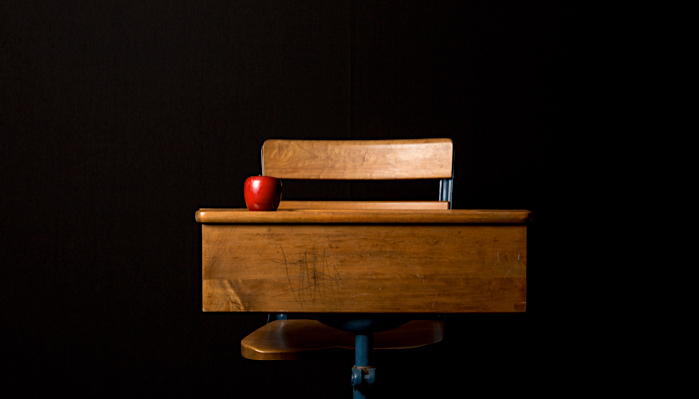Reaching the Disabled Child in the Mainstream Classroom

I was born with cerebral palsy which was diagnosed when I was three months old. From the age of eight months I attended a special school first as an outpatient and then as a pupil. There I received the much needed occupational and physiotherapy treatment needed that allowed me, at the age of twelve, to be mainstreamed.
I attended a mainstream high school where I worked hard to keep up with my peers. Having partial peripheral vision in my right eye and hearing loss I always made sure that I sat near the front of the class and adapted myself in such a way that I could subtly watch around me for non-verbal cues for situations I missed or when the situation called for it. Sometimes this meant I ended up lip reading during a lesson.
I can remember always feeling tense and, at first, I thought that was how everyone else felt as well, but as I matured I began to realise it was the strain of having to make constant adjustments to my learning technique that was the source of my tension.
My mild form of hemiplegia allowed me to blend in easier in the new environment. However the true extent of my disability hid itself well because of the constant adaptations I made to fit in.
It was only when I had an off day and my arm was in spasm that my peers realized that there was a difference… a difference they could not account for or comprehend so they dealt with it, as adolescents do, by teasing. What I dreaded most was the isolation, which was unbearable.
My teachers weren’t much better. They found it difficult to accept when special compensations needed to be made in exam periods or to understand my reasons for tearful outbursts when comments were written in my books for untidy writing or ruling off. To them I was exaggerating my circumstances.
I clearly remember being taught a particular method of studying that had appealed to me at the time and had continued to use it throughout my schooling. However the challenging part came when the workload increased and the technique I had for so long relied upon became more difficult to apply as the pressure mounted.
While others were flourishing I struggled to keep my head above water trying desperately to keep up, but also to understand the new methods that were being shown to me. I clearly misunderstood these or took extra time to understand as my processing of information took longer than most. I dealt with this silently and on the few occasions I asked for help it became clear to me that it caused more frustration with others as they could not comprehend my difficulty in understanding.
It was only once I made the decision to study teaching that I realized how much of my time had been spent compensating for different strategies that I had not understood. I learned words like visual, auditory, kinaesthetic and holistic.
 A visual learner responds well to pictures or visual clues, flourishing when being able to depict their understanding of material in picture form or using visual cues. On the other hand, an auditory learner is one who responds well to verbal instructions or being able to competently dictate instructions given to them orally. The kinaesthetic learner needs to be able to do while taking in information; being provided with the opportunity to get rid of excess energy while still being able to express their understanding of the information being given. I also learned that there was a way to combine all three by taking into account the child’s circumstances, personality and strengths and using one or all three depending on the material being used.
A visual learner responds well to pictures or visual clues, flourishing when being able to depict their understanding of material in picture form or using visual cues. On the other hand, an auditory learner is one who responds well to verbal instructions or being able to competently dictate instructions given to them orally. The kinaesthetic learner needs to be able to do while taking in information; being provided with the opportunity to get rid of excess energy while still being able to express their understanding of the information being given. I also learned that there was a way to combine all three by taking into account the child’s circumstances, personality and strengths and using one or all three depending on the material being used.
I realized that often teachers applied only one technique to their teaching which often only suited a handful of learners and while many coped, their needs were not being met and they struggled silently along while just managing to pass.
Disabled children face not only these challenges but their physical ones too. Often, because of their disability, it is hard to determine which technique would be most beneficial. In some instances it is a case of trial and error. The matter becomes even more complicated when the learners for various reasons find it difficult to express themselves and their understanding or lack thereof, resulting in misbehavior or being labelled “problem children.”
Although teachers learn about these teaching techniques while studying, there are very few who take cognisance of each learning style while preparing lessons and usually find one style that suits them and use it throughout their teaching career. Teachers are often weary of changing tried and tested material or introducing updated ones as this requires additional planning in an already tight and pressured schedule. Reasons for this are often the time needed to prepare new material and the volume of work expected to be complete during a school year. Added to this is the amount of administration that teachers are expected to complete. While these are not excuses, they are for many a valid explanation why they resist the changes they are expected to make to their daily teaching timetable. An additional obstacle is the size of the classes.
It is generally those that have a remedial degree that are able to make the necessary adjustments to their teaching techniques to accommodate all types of learners. Alternatively children are sent for remedial or enrichment classes.
It is seldom that mainstream education makes allowances for children with special needs in their planning and buildings. Certainly not all children with special needs can be mainstreamed, however, those who are, often find themselves in situations they are unable to cope with or they lack the social skills required to deal with it and it is left to the parents to explain or ask for certain allowances to be made.
Unless there is a conscious effort made to include children with special needs into various social situations these children are misunderstood or ostracized.
The assumption is made that they are limited to what they are capable of becoming based purely on the physical limitations which prevents them from reaching their true potential.
Ironically, it is often these children who are able to transition far more easily because of the challenges they face on a daily basis. However this seldom happens as these children are not given the opportunity to fulfil their dreams of success, but rather left in specialized schooling.
If a child is taught to believe in herself and to understand her strengths and weakness and realizes that there is more than one way of expressing and understanding what they have learned, their potential is limitless, regardless of whether or not they are disabled.
Lesley Potgieter was born with cerebral palsy. Despite her disability she overcame a number of challenges and obstacles and qualified as a primary school teacher. When the first of her two sons was born Lesley took a break from teaching and focussed on raising her family. Being a mom of young boys she realized that there were very few audio stories available for kids. Lesley then started writing stories and recording them in a studio. Her Never-Ending Stories are now available on CD. You can learn more about Never-Ending Stories on her website or on Facebook.
Related Posts

Eye Conditions and Syndromes, Visual Impairment
Neuralink Announces Plans to Restore Sight to the Blind with Brain Chip
Elon Musk’s company Neuralink has announced plans to begin human trials of its new “Blindsight” brain chip by the end of 2025.

IEPs
What Should I Bring to My Child’s First IEP Meeting?
Prepare for your child's first IEP meeting with confidence! Discover exactly what documents to bring, including educational records, medical info, and questions to ask.

Special Needs
5 Spring Cleaning Tips for Families of Children with Disabilities
Spring cleaning is an opportunity to create a more accessible, organized, and supportive space for your child with disabilities. Declutter, deep clean, and refresh!